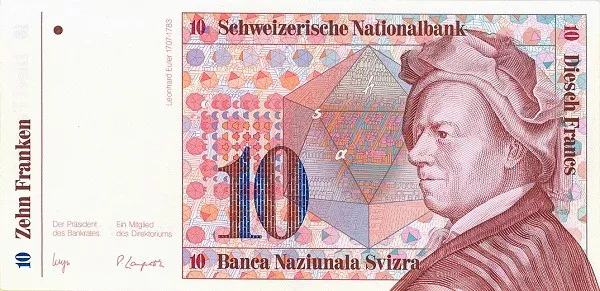Switzerland is a country that is known for its stunning alpine landscapes, delicious chocolates, and of course, its currency – the Swiss Franc (CHF). The CHF is one of the most stable and reliable currencies in the world, with a long history of being a safe haven for investors during times of economic uncertainty. In this article, we will explore what the CHF is, why it is important in Switzerland, and some key facts about the currency.
What is the Swiss Franc?
The Swiss Franc is the official currency of Switzerland and Liechtenstein. It was first introduced in 1850 to replace various currencies used by different cantons (states) in Switzerland. The symbol for the Swiss Franc is CHF, which stands for “Confoederatio Helvetica Franc”. This is because Switzerland’s official name is “Confoederatio Helvetica” in Latin.
Features of the Swiss Franc
- Stability: The Swiss Franc is known for its stability, which means that it doesn’t fluctuate much in value compared to other currencies.
- Safe-haven status: During times of economic turbulence, investors flock to the Swiss Franc as a safe haven due to its stability and the strong economy of Switzerland.
- High purchasing power: The Swiss Franc has one of the highest purchasing powers in the world. This means that goods and services in Switzerland may be more expensive than in other countries.
Importance of the Swiss Franc in Switzerland
The Swiss Franc plays a significant role in the Swiss economy and society. Here are a few reasons why:
- Legal tender
- The Swiss Franc is the only legal tender in Switzerland. This means that all transactions conducted in Switzerland must be in Swiss Francs.
- Every Swiss citizen has access to Swiss Francs, which means that everyone can participate in the country’s economy.
- Swiss National Bank
- The Swiss National Bank (SNB) is responsible for managing the monetary policy of Switzerland, which includes maintaining price stability and ensuring the smooth functioning of the financial system.
- The SNB has a mandate to intervene in foreign exchange markets to protect the Swiss Franc from becoming too strong or too weak.
- Tourism
- Tourism is a significant contributor to the Swiss economy, and the strength of the Swiss Franc can impact the number of tourists that visit the country.
- When the Swiss Franc is strong, traveling to Switzerland may be more expensive for foreigners, which can decrease the number of visitors.
- International trade
- Switzerland is a small country with a relatively large economy, and international trade plays an important role in the country’s economic growth.
- The value of the Swiss Franc can affect the competitiveness of Swiss exports in international markets. When the Swiss Franc is strong, Swiss exports are more expensive compared to other countries, making them less competitive.
Key facts about the Swiss Franc
Banknotes and coins
- Banknotes: The Swiss Franc has banknotes with denominations of 10, 20, 50, 100, 200, and 1,000 CHF.
- Coins: There are eight different coins with values of 5, 10, 20 centimes, and ½, 1, 2, and 5 francs.
Exchange rate
- As of April 27, 2023, the exchange rate of the Swiss Franc to the US dollar is 0.92 CHF per USD.
- The exchange rate of the Swiss Franc to other currencies fluctuates based on market conditions and the policies of the SNB.
Use outside of Switzerland
- While the Swiss Franc is primarily used in Switzerland and Liechtenstein, it is sometimes used as a reserve currency by other countries and international organizations.
- The Swiss Franc may also be used as a currency for international transactions in certain industries, such as luxury goods or banking.
In conclusion, the Swiss Franc is an essential part of Switzerland’s economy and society. Its stability, safe-haven status, and high purchasing power make it a valuable currency for investors and citizens alike. Understanding its importance can help individuals and businesses navigate the intricacies of doing business in Switzerland, whether through tourism or international trade.
Related Topics:



























